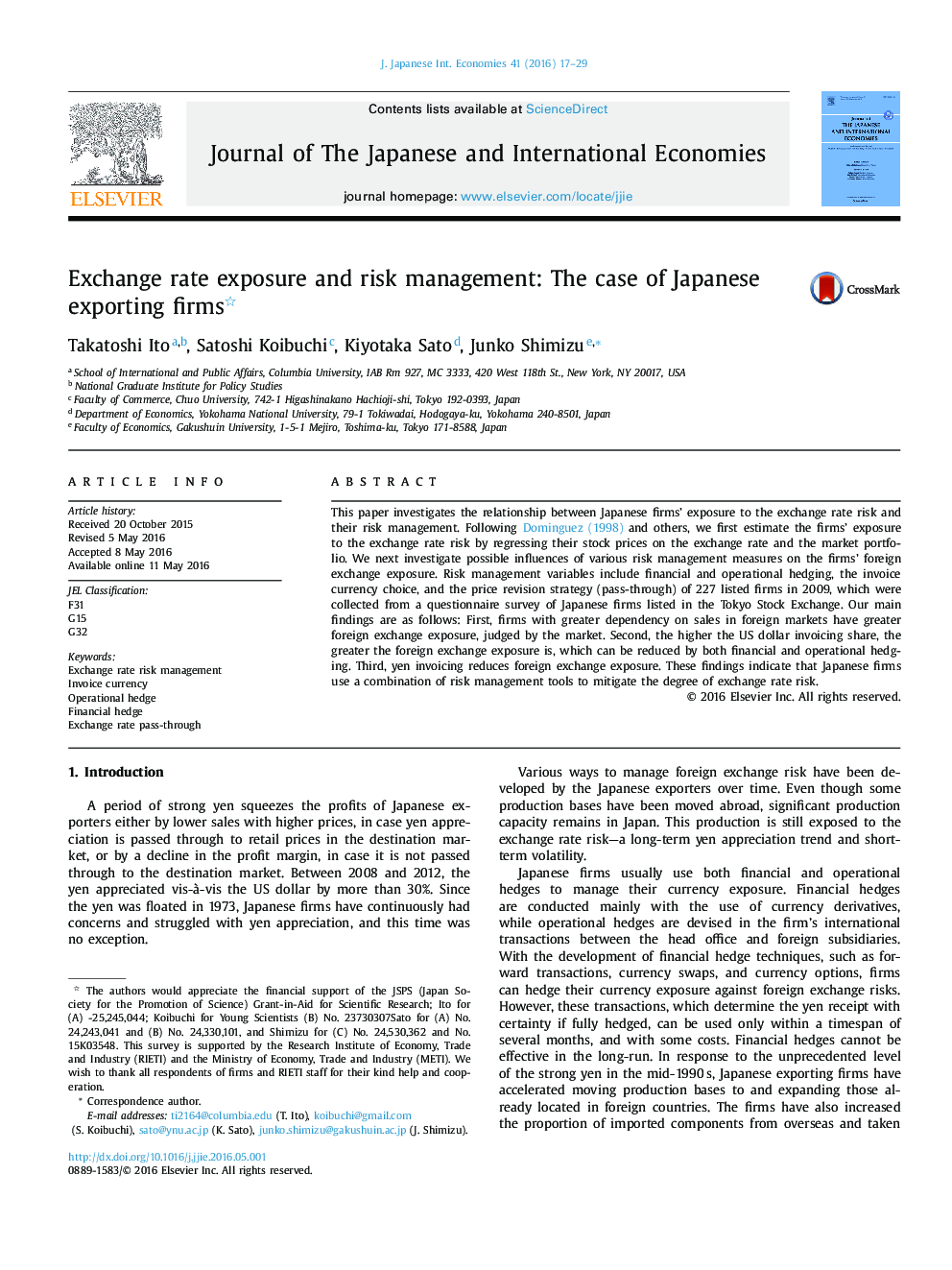| Article ID | Journal | Published Year | Pages | File Type |
|---|---|---|---|---|
| 964878 | Journal of the Japanese and International Economies | 2016 | 13 Pages |
•We conducted the questionnaire survey of Japanese firms’ exchange risk management.•Large foreign sales and US dollar invoicing lead to greater foreign exchange exposure.•Both financial and operational hedging can reduce the foreign exchange exposure.•Yen invoicing exports can also mitigate the firms’ foreign exchange exposure.•Japanese firms need to use a combination of the tools to reduce the exchange rate risk.
This paper investigates the relationship between Japanese firms’ exposure to the exchange rate risk and their risk management. Following Dominguez (1998) and others, we first estimate the firms’ exposure to the exchange rate risk by regressing their stock prices on the exchange rate and the market portfolio. We next investigate possible influences of various risk management measures on the firms’ foreign exchange exposure. Risk management variables include financial and operational hedging, the invoice currency choice, and the price revision strategy (pass-through) of 227 listed firms in 2009, which were collected from a questionnaire survey of Japanese firms listed in the Tokyo Stock Exchange. Our main findings are as follows: First, firms with greater dependency on sales in foreign markets have greater foreign exchange exposure, judged by the market. Second, the higher the US dollar invoicing share, the greater the foreign exchange exposure is, which can be reduced by both financial and operational hedging. Third, yen invoicing reduces foreign exchange exposure. These findings indicate that Japanese firms use a combination of risk management tools to mitigate the degree of exchange rate risk.
